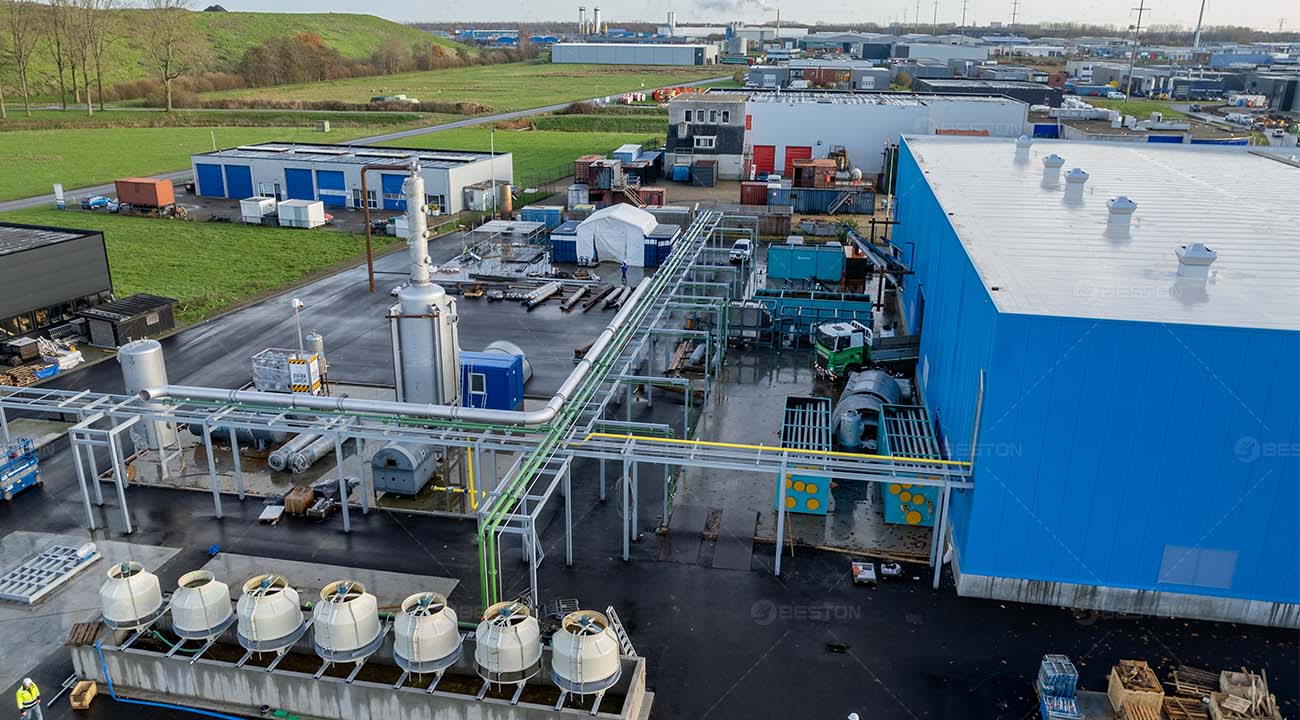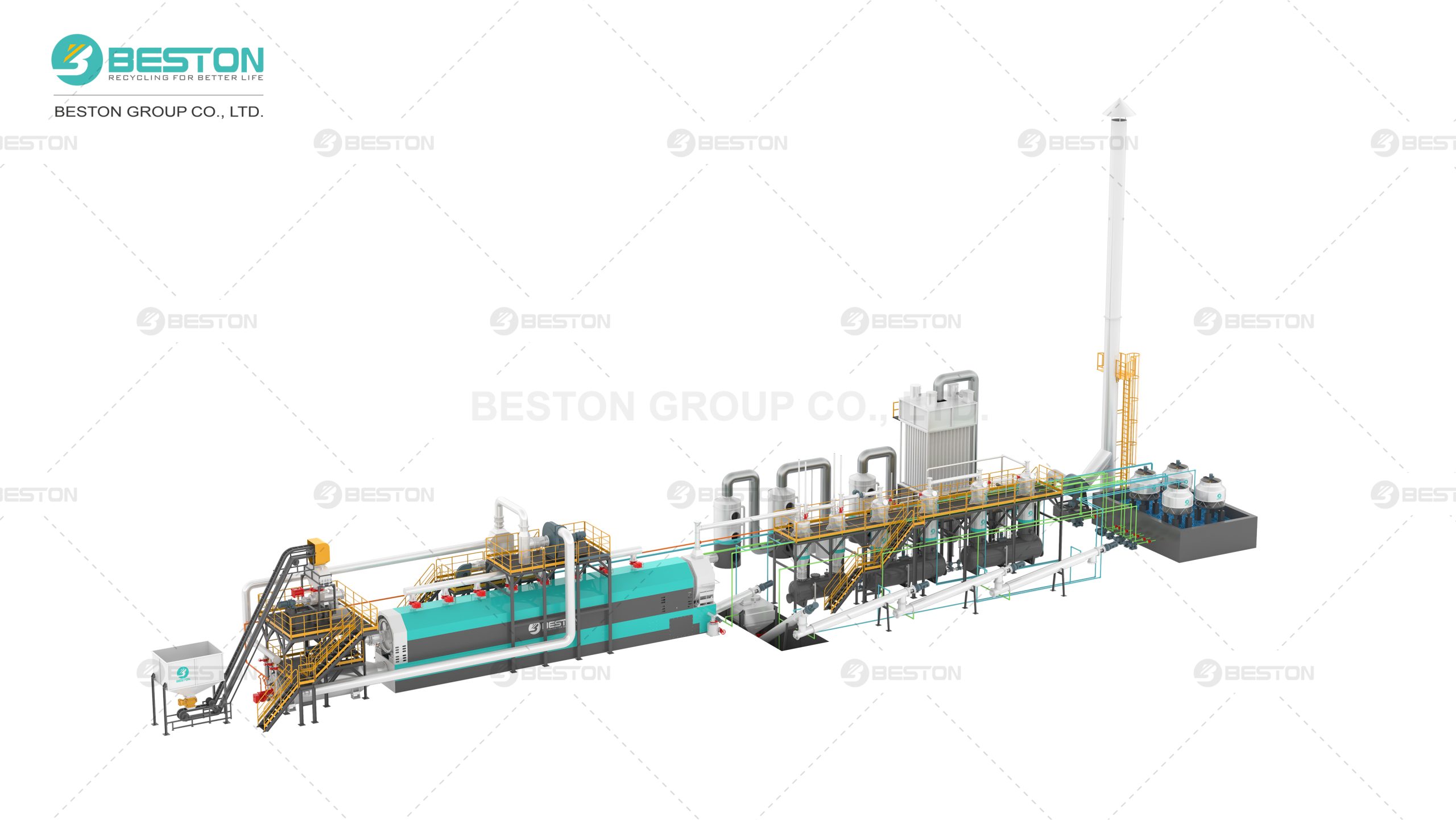In the realm of thermal decomposition processes, pyrolysis plants stand as technological beacons, transforming waste materials into valuable resources. However, within this domain, a dichotomy exists between continuous pyrolysis plants and batch pyrolysis plants. This article navigates the intricacies of these two distinct approaches, unraveling their operational nuances, and shedding light on their respective advantages and applications.

Decoding Continuous Pyrolysis Plants
Constant Transformation Flow
At the heart of a continuous pyrolysis plant lies its ability to maintain a constant flow of material through the entire process. This continuous operation ensures an uninterrupted conversion of feedstock into valuable byproducts.
Continuous Feeding Mechanism
A hallmark feature of continuous pyrolysis plants is their continuous feeding mechanism. Waste materials are constantly fed into the pyrolysis reactor, minimizing downtime and optimizing the overall efficiency of the process.
Efficient Heat Utilization
Continuous operation facilitates optimal heat utilization within the system. The heat generated during the pyrolysis process is efficiently harnessed, contributing to the sustainability of the operation.
Heat Integration Systems
In some advanced configurations of continuous pyrolysis plants, heat integration systems are employed. These systems capture excess heat and redirect it back into the process, enhancing energy efficiency and reducing overall operational costs.
High Throughput Capacities
A defining characteristic of continuous pyrolysis plants is their high throughput capacities. These systems can handle a continuous stream of feedstock, making them well-suited for large-scale waste processing applications.
Automated Process Control
To manage the high throughput efficiently, continuous pyrolysis plants often incorporate automated process control systems. These systems monitor and adjust various parameters in real-time, ensuring optimal performance and product quality.
Unveiling Batch Pyrolysis Plants
Discrete Processing Cycles
In contrast to the continuous flow of continuous pyrolysis plant, batch pyrolysis plant operates in discrete processing cycles. Each cycle involves loading a batch of feedstock, initiating the pyrolysis process, and then unloading the resulting products before starting a new cycle.
Intermittent Loading and Unloading
Batch pyrolysis plants have intermittent loading and unloading phases, leading to a cyclical operation. While this may introduce brief pauses in the process, it provides flexibility in managing varying feedstock compositions.
Flexibility in Operation
Batch pyrolysis plants offer a degree of flexibility in terms of the types of materials they can process. The discrete nature of their operation allows for adjustments and customization between batches to accommodate diverse feedstocks.
Varied Feedstock Composition
This flexibility is particularly advantageous when dealing with varying feedstock compositions or when the objective is to process specific materials in isolation during a batch cycle.
Ease of Maintenance
The cyclical nature of batch pyrolysis plants often translates into simpler maintenance procedures. During the intermittent phases between batches, maintenance tasks can be efficiently carried out without disrupting continuous operation.
Scheduled Downtime for Maintenance
In many batch pyrolysis plants, scheduled downtime for maintenance becomes a routine part of the operational cycle. This proactive approach ensures the longevity and reliability of the equipment.

Comparative Analysis: Continuous vs. Batch Pyrolysis Plants
Operational Efficiency
Continuous pyrolysis plants excel in operational efficiency due to their uninterrupted processing flow. The constant feed of material, coupled with automated control systems, results in a streamlined and efficient operation. Conversely, batch pyrolysis plant may experience intermittent pauses between cycles, affecting overall throughput.
Scalability
In terms of scalability, continuous pyrolysis plants are often favored for large-scale waste processing due to their high throughput capacities. The continuous nature of the operation allows for seamless integration into industrial-scale applications. On the other hand, batch pyrolysis plants are more adaptable to smaller-scale operations and offer flexibility in handling varying feedstock types.
Flexibility and Customization
Batch pyrolysis plants gain an edge in terms of flexibility and customization. The discrete processing cycles allow for adjustments between batches, making them suitable for applications where feedstock composition varies. Continuous pyrolysis plants, while efficient, may be optimized for specific feedstock types.
Energy Efficiency
Both continuous and batch pyrolysis plants can be designed with energy efficiency in mind. Continuous plants often incorporate advanced heat integration systems for optimal energy utilization. Batch plants, with their intermittent cycles, can allow for effective energy recovery during downtime, contributing to overall efficiency.
Maintenance Considerations
Maintenance considerations play a role in the choice between the two types of pyrolysis plants. Continuous pyrolysis plants require careful planning to minimize downtime for maintenance, as any interruption in the continuous flow can impact overall efficiency. Batch pyrolysis plants, with their scheduled downtime between cycles, provide windows for efficient and planned maintenance tasks.
The Future Landscape: Integrating Continuous and Batch Pyrolysis Technologies
As the demand for sustainable waste management solutions grows, the future landscape may witness an integration of both continuous and batch pyrolysis technologies. Hybrid systems that combine the efficiency of continuous processing with the flexibility of batch operations could emerge as a strategic approach, providing a versatile solution for various waste processing scenarios. Looking for a pyrolysis plant manufacturer you can trust? Looking for a pyrolysis plant manufacturer you can trust? To make Beston Group your first choice, please visit: https://bestonasia.com/
Conclusion:
In conclusion, the choice between continuous pyrolysis plants and batch pyrolysis plants hinges on the specific requirements of the application. The decision involves a delicate balance between operational efficiency, scalability, flexibility, and maintenance considerations.
As technology continues to advance, the synthesis of these two distinct approaches may pave the way for a new era in pyrolysis plant design. The ultimate goal remains constant – to harness the transformative power of pyrolysis in converting waste into valuable resources while meeting the evolving needs of sustainable waste management practices.